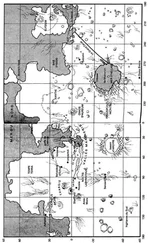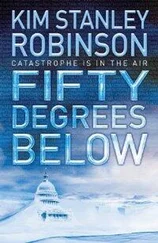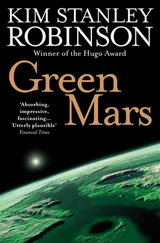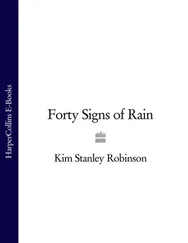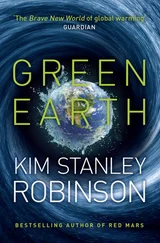‘If it weren’t for the political obstructions.’
‘Yes. Maybe this is an issue where we have to try to educate Congress, the administration and the people. Think about how we might do that. But now, on to cleaner energy production.’ Diane clicked slides again. ‘Here again we already have proven options, in the form of all the renewables, many of them working and ready to be expanded. Wind, geothermal, solar, and so on.
‘The one with tremendous potential for growth is of course solar power. The technological difficulties in transferring sunlight to electricity are complicated enough that there are competing designs for improvement, still struggling to show superiority over the other methods. So one thing we can do is to help identify which ones to pursue with a big effort. Photovoltaic research, of course, but also we need to look at these flexible mirror systems, directing light to heatable elements that transform the heat into electricity. Further down the line, there is also the prospect of space solar, gathering the sunlight in space and beaming it down.’
‘Wouldn’t that require help from NASA?’
‘Yes, NASA should be part of this. A really big booster is a prerequisite for any conceivable space solar, naturally.’
‘And what about DOE?’
‘Well, perhaps. We have to acknowledge that some federal agencies have been captured by the industries they are supposed to regulate. Clearly the Department of Energy is one of these. They should have been taking the lead on clean energy, but they began as the Atomic Energy Commission, so for a while they would only look at nuclear, and now they are creatures of the oil industry. So they have been obstructions to innovation for many years. Whether that can change now, I don’t know. I suspect the only good that can come from them is some version of clean coal. If coal can be gasified, it’s possible its carbon and methane could be captured and sequestered before burning. That would be good, if they can pull it off. But beyond that, the unfortunate truth is that DOE is more likely to be one of the impediments to our efforts than a help. We will have to do what we can to engage them, and dance around any obstacles they might set up.’
She clicked again. ‘Now, carbon capture and sequestering. Here, the hope is that ways can be found to draw down some of the CO2 already in the atmosphere. That could be a big help, obviously. There are proven mechanical means to do this, but the scale of anything we could afford to build is much too small. If anything’s going to work, it almost certainly will have to be biological. The first and most obvious method here is to grow more plants. Reforestation projects are thus helpful in more ways than one, as stabilizing soil, restoring habitat, growing energy, and growing building materials, all while drawing down carbon. Poplars are often cited as very fast growers with a significant drawdown possibility.
‘The other biological method suggested would involve some hypothetical engineered biological system taking more carbon out of the atmosphere than it does now. This brings biotech into the game, and it could be a crucial player. It might have the possibility of working fast enough to help us in the short term.’
For a while they discussed the logistics of initiating all the efforts Diane had sketched out so far, and then Anna took over the Power Point screen.
She said, ‘Another carbon sequestration, in effect, would be to not burn oil that we would have using our current practices. Meaning conservation. It could make a huge difference. Since the United States is the only country living at American consumption levels, if we here decided to consume less, it would significantly reduce world consumption levels.’
She clicked to a slide titled Carbon Values. It consisted of a list of phrases:
• conservation, preservation (fuel efficiency, carbon taxes)
• voluntary simplicity
• stewardship, right action (religion)
• sustainability, permaculture
• leaving healthy support system for the subsequent generations
Edgardo was shaking his head. ‘This amishization, as the engineers call it – you know, this voluntary simplicity movement – it is not going to work. Not only are we fond of our comforts and toys, and lazy too, but there is a fifty billion dollar a year industry fighting any such change, called advertising.’
Anna said, ‘Maybe we could hire an advertising firm to design a series of voluntary simplicity ads, to be aired on certain cable channels.’
Edgardo grinned. ‘Yes, I would enjoy to see that, but there is a ten trillion-a-year economy that also wants more consumption. It’s like we’re working within the body of a cancerous tumor. It’s hopeless, really. We will simply charge over the cliff like lemmings.’
‘Real lemmings don’t actually run off cliffs,’ Anna quibbled. ‘People might change. People change all the time. It just depends on what they want.’
She had been looking into this matter, which she jokingly called macrobioinformatics: researching, refining and even inventing various rubrics by which people could evaluate their consumption levels quantitatively, with the idea that if they saw exactly what they were wasting, they would cut back and save money. The best known of these rubrics, as she explained, were the various ‘ecological footprint’ measurements. These had been originally designed for towns and countries, but Anna had worked out methods for households as well, and now she passed around a chart illustrating one method, with a statistical table that illustrated her earlier point that since Americans were the only ones in the world living at American consumption levels, any reduction here would disproportionately shrink the total world footprint.
‘The whole thing should be translated into money values at every step,’ Edgardo said. ‘Put it in the best way everyone in this culture can understand, the cost in dollars and cents. Forget the acreage stuff. People don’t know what an acre is anymore, or what you can expect to extract from it.’
‘Education, good,’ Diane said. ‘That’s already part of our task as defined. And it will help to get the kids into it.’
Edgardo cackled. ‘Okay, maybe they will go for it, but also the economists should be trying to invent an honest accounting system that doesn’t keep exteriorizing costs. When you exteriorize costs onto future generations you can make any damn thing profitable, but it isn’t really true. I warn you, this will be one of the hardest things we might try. Economics is incorrigible. They call it the dismal science but actually it’s the happy religion.’
Frank tended to agree with Edgardo’s skepticism about these kinds of social interventions; and his own interests lay elsewhere, in the category Diane had labeled ‘Mitigation Projects.’ Now she took back the Power Point from Anna and clicked to a list which included several of the suggestions Frank had made to her earlier:
1) establishing one or more national institutes for the study of abrupt climate change and its mitigation, analogous to Germany’s Max Planck Institutes.
2) establishing grants and competitions designed to identify and fund mitigation work judged crucial by NSF.
3) reviewing the already existing federal agencies to find potentially helpful projects they had undertaken or proposed, and coordinate them.
All good projects, but it was the next slide, ‘Remedial Action Now,’ that was the most interesting to Frank. One of the obvious places to start here was with the thermohaline circulation stall. Diane had gotten a complete report from Kenzo and his colleagues at NOAA, and her tentative conclusion was that the great world current, though huge, was sensitive in a nonlinear way to small perturbations. Which meant it might respond sensitively to small interventions if they could be directed well.
Читать дальше

